
Make Your Own Stropharium
King Stropharia have long been one our favorite mushrooms to work with at Fungi Perfecti. For those of you who are not familiar, the King Stropharia mushroom (Stropharia rugoso-annulata, also known as the Garden Giant™) is a vigorous species that thrives on a variety of substrates and is a prolific producer of large, choice edible mushrooms. In the last year we have discovered yet another exciting way to work with this species. With the King Stropharia Mushroom Patch™ and a few household items you can create beautiful experiential model that allows you to see how wood-decaying fungi interact with the soil. You will have a rare glimpse into the unseen underground world of fungi. We’ve taken to calling this creation a “Stropharium.”
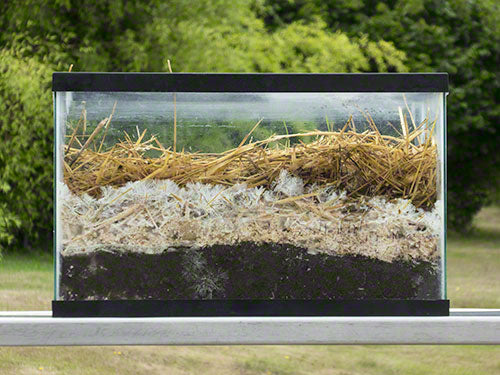
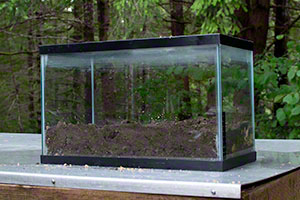
To create your own Stropharium, you will need a container with clear sides. An old aquarium or fish tank works best because it provides four flat planes where the growth of the mycelium can be easily tracked. A large glass vase will also work well.
To begin, you will want to recreate layers of soil strata in your container. This could be as simple as lining the bottom of the container with garden soil. Conversely, you could make a complex layering of soil strata which include gravel, clay, garden soil, rocks, and woody debris. Really, it’s up to you how complex you want to make this, but in the end you will want the soil layer to be 6-8 inches deep. It is important that the soil has some moisture in it to begin with. As a general rule, the soil should be moistened as if you were going to use it to plant seeds.
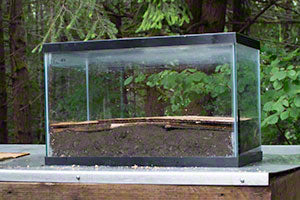
This next step is optional but adds a layer of complexity and provides a glimpse into how a weed suppressing layer of cardboard improves this gardening method. It also provides a good source of food for the fungi .Take a sheet of corrugated cardboard, cut it in the shape of your container and soak in water until the cardboard is no longer rigid. Place this layer on top of your soil.
Now it’s time to break up your King Stropharia Mushroom Patch™ and lay the material on top of the soil (or cardboard if you have chosen to include it). How much of the kit is used will vary depending on how large your container is, but make this layer 1 to 1½ inches thick. If there is a lot of material left over at this point, you might consider making another Stropharium out of the remainder.
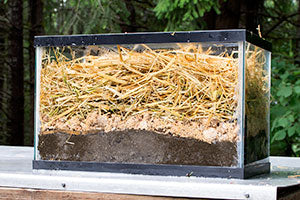
Now we are going to put a mulch layer. This can consist of straw, hardwood sawdust, wood chips, or a combination of all three. If this material is dry, soak it in a bucket for 25 minutes to ensure the fungi will have enough moisture Drain the water and put your mulch layer on top of everything. There is a bit of flexibility here with the depth of the mulch layer but make it at least 2 inches thick, and no more than 8 inches. This will be the nutritive layer that the fungal organism will use as food.
Now that this is accomplished it is time to sit back and watch the fungi in action. You should soon see a fuzzy growth develop on top of, through and beneath the layer of material from your broken-up Mushroom Patch.
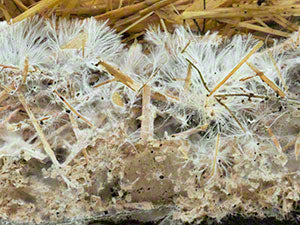
This fuzz will turn into fans of whitish tendrils reaching both down into the soil and up into the mulch. If you want to track the growth of the mycelium we recommend using a sharpie to outline the leading edge of the hyphae both in the mulch layer as well as in the soil. It can be helpful to write the date next to each line. Repeat this every four or five days and you will wind up beautiful concentric rings detailing the fungal growth.
It is important to know from the outset that growing your King Stropharia Patch using this technique is unlikely to produce mushrooms. The good news is when you are done tracking the growth of the mycelium you can then transplant your container into the garden, add a bit more mulch to feed the fungi, and you have just started an outdoor Stropharia patch.
This is a great project for anyone curious about the inner workings of fungi. It’s very accessible for all ages and can even be used as a classroom demonstration.
